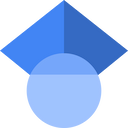Search for point-like sources of ultra-high energy neutrinos at the Pierre Auger Observatory and improved limit on the diffuse flux of tau neutrinos
Abstract:
The surface detector array of the Pierre Auger Observatory can detect neutrinos with energy E ν between 1017 eV and 10 20 eV from point-like sources across the sky south of +55° and north of -65° declinations. A search has been performed for highly inclined extensive air showers produced by the interaction of neutrinos of all flavors in the atmosphere (downward-going neutrinos), and by the decay of tau leptons originating from tau neutrino interactions in Earth's crust (Earth-skimming neutrinos). No candidate neutrinos have been found in data up to 2010 May 31. This corresponds to an equivalent exposure of ∼3.5years of a full surface detector array for the Earth-skimming channel and ∼2 years for the downward-going channel. An improved upper limit on the diffuse flux of tau neutrinos has been derived. Upper limits on the neutrino flux from point-like sources have been derived as a function of the source declination. Assuming a differential neutrino flux k PS E -2ν from a point-like source, 90% confidence level upper limits for k PS at the level of ≈5 × 10-7 and 2.5 × 10-6 GeV cm-2 s-1 have been obtained over a broad range of declinations from the searches for Earth-skimming and downward-going neutrinos, respectively. © 2012 The American Astronomical Society. All rights reserved.
Año de publicación:
2012
Keywords:
- astroparticle physics
- cosmic rays
- Neutrinos
- telescopes
Fuente:
 scopus
scopus google
googleTipo de documento:
Article
Estado:
Acceso restringido
Áreas de conocimiento:
- Física de partículas
Áreas temáticas de Dewey:
- Física moderna
- Geología, hidrología, meteorología
- Otras ramas de la ingeniería
Objetivos de Desarrollo Sostenible:
- ODS 9: Industria, innovación e infraestructura
- ODS 17: Alianzas para lograr los objetivos
- ODS 4: Educación de calidad